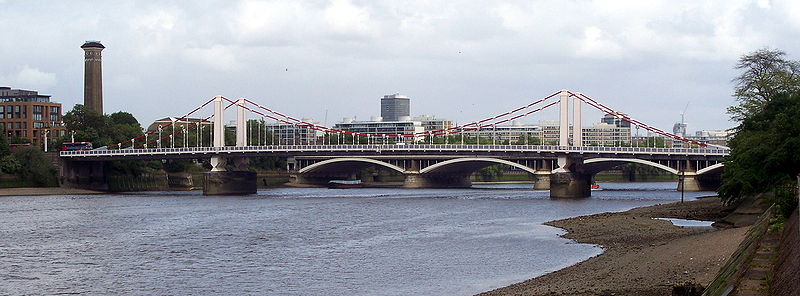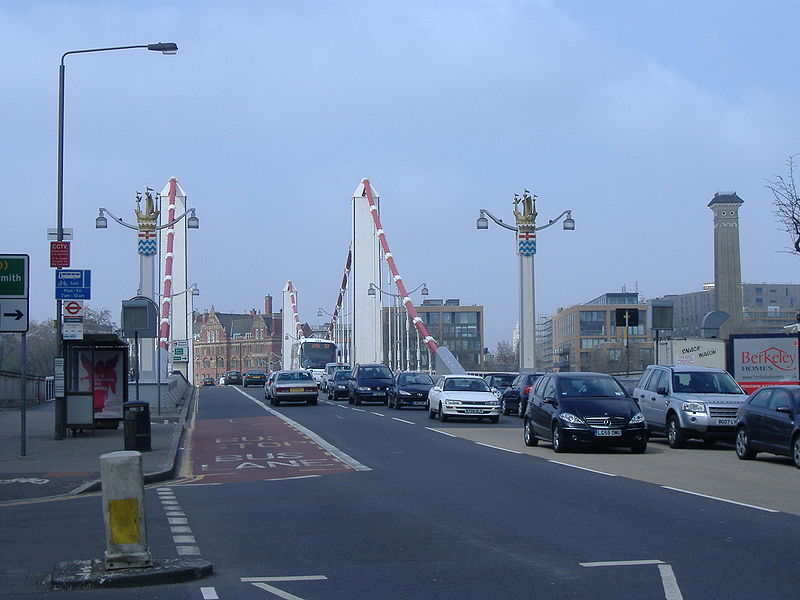| |||||||
Europe
North AmericaSouth AmericaAsiaAustralia and OceaniaAfrica |
Смотрите также: Chelsea Bridge Chelsea Bridge is a bridge over the River Thames in West London, connecting Chelsea on the north bank to Battersea on the south bank. There have been two Chelsea Bridges, on the site of what was an ancient ford.
Chelsea Bridge Crosses River Thames Locale Chelsea, London Designer G. Topham Forrest and E. P. Wheeler Design Self-anchored suspension bridge Material Steel Piers in water 2 Total length 698 feet (213 m) Width 64 feet (20 m) Height 69 feet 2 inches (21.1 m) Longest span 332 feet (101 m) Number of spans 3 Opening date 6 May 1937 Preceded by Victoria Bridge (1857–1935), also known as Old Chelsea Bridge
The first Chelsea Bridge was proposed in the 1840s as part of a major development of marshlands on the south bank of the Thames into the new Battersea Park. It was a suspension bridge intended to provide convenient access from the densely populated north bank to the new park. Although built and operated by the government, tolls were charged initially in an effort to recoup the cost of the bridge. Work on the nearby Chelsea Embankment delayed construction and so the bridge, initially called Victoria Bridge, did not open until 1857. Although well received architecturally, as a toll-bridge it was unpopular with the public, and Parliament felt obliged to make it toll-free on Sundays. The bridge was less of a commercial success than had been anticipated, partly because of competition from the newly built Albert Bridge nearby. It was acquired by the Metropolitan Board of Works in 1877, and the tolls were abolished in 1879.
The bridge was narrow and structurally unsound, leading the authorities to rename it Chelsea Bridge to avoid the Royal Family's association with a potential collapse. Unable to handle increased volumes of users caused by population growth in the surrounding area and the introduction of the automobile, in 1926 it was proposed that the bridge be rebuilt or replaced. Between 1934 and 1937 it was demolished and replaced by the current structure which opened in 1937.
The new bridge was the first self-anchored suspension bridge in Britain, and was built entirely with materials sourced from within the British Empire. During the early 1950s it became popular with motorcyclists, who staged regular races across the bridge. One such meeting in 1970 erupted into violence, resulting in the death of one man and the imprisonment of 20 others. Chelsea Bridge is floodlit from below during the hours of darkness, when the towers and cables are illuminated by 936 feet (285 m) of light-emitting diodes. As of 2008 it achieved Grade II listed status. In 2004 a smaller bridge perpendicular to the main bridge Battersea footbridge was opened beneath the southern span, carrying the Thames Path underneath the main bridge. Comments: 0 |
|
|||||










































